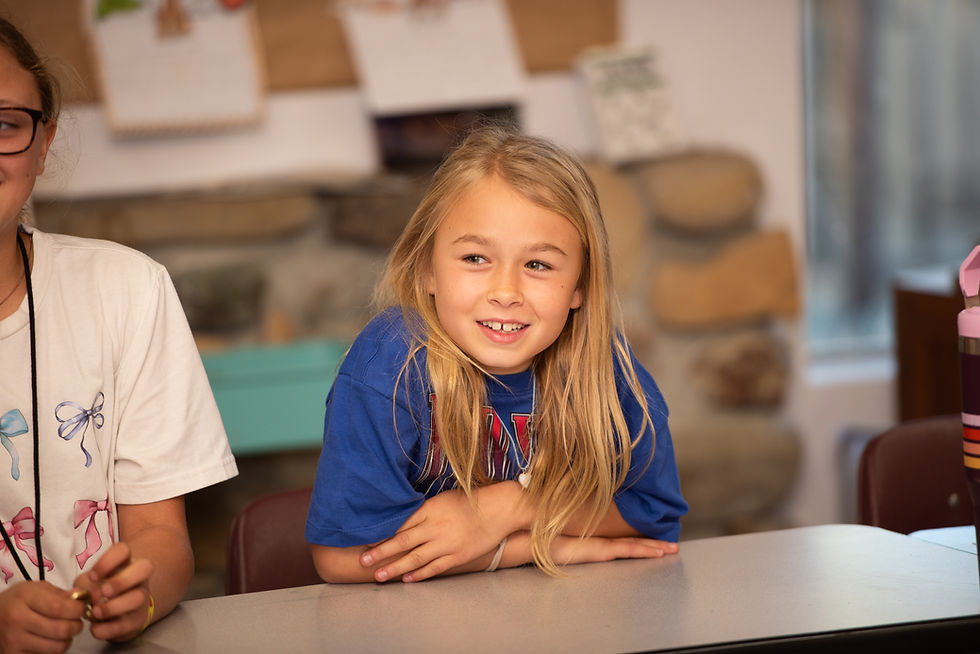The Power of Routine: Why Structure Helps Kids Thrive
- Sheri Replane
- Oct 20
- 3 min read

At the start of the school year, our Head of School, Julianne Tullis-Thompson, reminded us to have patience as children and adults adjusted to the structure of school life once again. Two months later, the wisdom of that reminder is clear. What once felt new and unpredictable has begun to take shape. The rhythms of the day, from morning greetings to end-of-day reflections, are becoming second nature, and with that familiarity comes confidence and calm.
Routines Build Security and Confidence
Routines are more than just schedules; they are the framework that helps children feel secure and ready to learn. Predictability gives kids the freedom to take risks, explore ideas, and focus on growth rather than uncertainty. My son William, in Green Door, has gone from needing me to carry his backpack into the classroom to insisting on carrying it himself. Most days, he doesn’t even look back to say goodbye. Rather, he runs straight in, hangs up his bag, grabs his water bottle, and joins his friends. These small but meaningful steps build independence and self-confidence in ways that ripple throughout the rest of his day.
My daughter Mimi, in Red Door, came home recently and asked, “Why is home so boring and school isn’t?” When we asked her to explain, she said, “At home, you and Dad tell me what to do. That doesn’t happen at school.” We reminded her that there are grown-ups at school, her teachers, and she quickly replied, “Yes, but they don’t tell us what to do. We have a routine, and we know what to do.” Her words beautifully capture what educators know well - structure doesn’t limit children - it empowers them. When expectations are clear and consistent, children experience the freedom that comes from knowing what comes next.

The Educator’s Perspective
At SYV Family School, we believe that academic, social, and emotional growth are all equally important for developing confident, engaged learners. Our routines and daily structures reflect this philosophy as we create a safe and supportive environment where students can focus on learning and exploring their innate curiosity.
As students move through the year, their classrooms often follow a natural rhythm similar to Bruce Tuckman’s stages of group development: forming, storming, norming, performing, and adjourning. Early in the year, students are in the forming stage - learning routines, expectations, and how to connect with peers. The storming stage follows, where children begin to test boundaries and assert independence. With guidance, they enter the norming phase, when shared routines and trust begin to take hold. By the performing stage, the classroom functions as a cohesive community, students collaborate, problem-solve, and take pride in their independence. Eventually, during adjourning, they reflect on their growth and prepare for the next step in their journey.
At each door, children are guided toward greater independence and responsibility. Teachers observe and understand each child closely, tailoring support to individual abilities. Staff collaboration ensures that students receive consistent scaffolding as they progress, gaining self-confidence through positive feedback and opportunities to take on challenging roles. These principles align perfectly with the power of routine, providing children with stability, predictability, and the freedom to grow.
Routines at Home
The same principles apply at home. Consistent morning and evening routines help children feel grounded and capable, even on busy days. Setting clear expectations such as preparing backpacks and laying out clothes the night before, establishing a bedtime routine, or setting aside time for homework and play, gives children a sense of stability. When kids know what to expect, they can focus their energy on creativity, curiosity, and independence.
Patience and Consistency Pay Off
As Julianne reminded us, it often takes four to six weeks for students, and families to fully adjust to classroom expectations, procedures, and routines. You may notice days that feel smooth and effortless, only to have moments that feel more disjointed or challenging. Be patient and stay consistent with your morning and nighttime routines. Over time, this structure will provide more freedom and confidence for your child, allowing them to flourish both at school and at home.










Comments